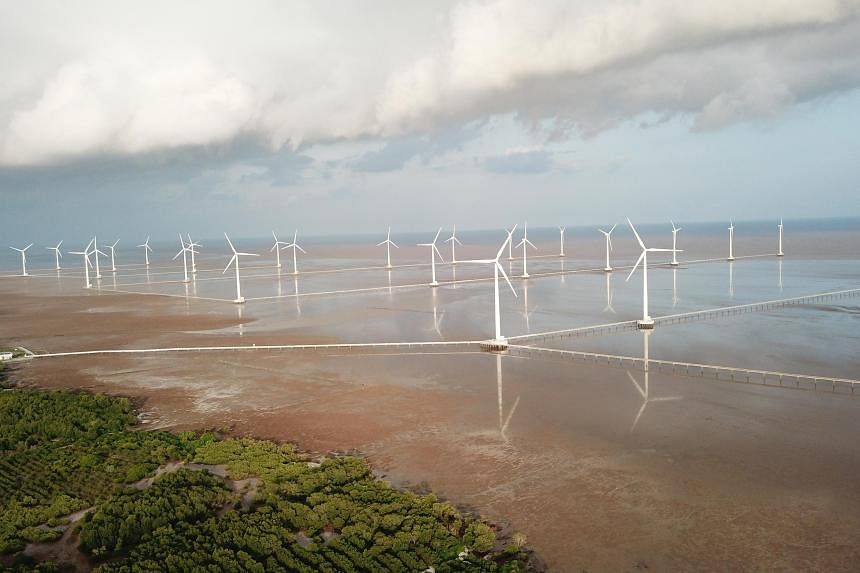HANOI - Vietnam will have a hard time reaching its offshore wind power target for 2030, a top executive at a state-owned energy company said, with foreign investors also warning of multiple regulatory hurdles that would need to be cleared.
The South-east Asian country has good offshore wind power potential given strong winds and shallow waters near densely populated areas, according to the World Bank, which estimates the sector could add at least US$50 billion (S$68 billion) to Vietnam’s economy.
Offshore wind is also a priority for Group of Seven (G-7) members that have promised funds to boost the country’s renewable energy sources and reduce its reliance on coal.
But the regulatory environment and challenging conditions for the industry globally are complicating Vietnam’s plans to install 6 gigawatts (GW) of offshore wind capacity by 2030 - from zero now - roughly the equivalent of installing what the world added in the first half of 2023, according to industry association World Forum Offshore Wind.
“It is very difficult to reach 6 GW by 2030,” the Vietnamese executive said, declining to be named because he was not allowed to speak to media.
Industry experts have estimated that the construction of an offshore wind farm usually takes more than five years, and often much longer.
Vietnam’s environment ministry - in charge of climate policy and which takes the lead in talks with G-7 partners on investment funds for wind - did not reply to a request for comment.
Vietnam’s industry ministry and state-owned energy parent PetroVietnam likewise did not immediately respond to requests for comment about the achievability of the 2030 wind power goal.
Vietnam currently has no offshore wind project, although there was a surge in onshore wind and solar energy capacity in recent years. Many of those new installations, though, have struggled to connect to the country’s underdeveloped power grid.
Vietnam’s foray into offshore wind comes just as the industry faces higher borrowing costs and supply delays that have derailed projects across the world, including in the United States and Britain.
G-7 members have raised concerns for Vietnam’s “lack of appropriate policies, regulations and procedures” in a document prepared ahead of the UN Climate Change Conference that begins on Nov 30 in Dubai.
The paper takes stock of discussions with Hanoi over climate funding and its commitment to cut carbon emissions.
Finalised in late October and reviewed by Reuters, the document warns of insufficient data on offshore wind speed and the structure of the seabed off Vietnam. It also notes the country has limited domestic financial capacity and little experience in the offshore sector.
Marine spaces also need to be clearly designated, the document says, which would help avoid the risk that areas could be later assigned for military or shipping purposes and encroach on offshore wind farms.
Hanoi has listed marine spatial planning and offshore wind regulations as actions potentially to be finalised in 2025, according to a draft document reviewed by Reuters that lists projects that could be eligible for international funding.
The document is expected to be approved before the UN conference in Dubai this month. REUTERS

